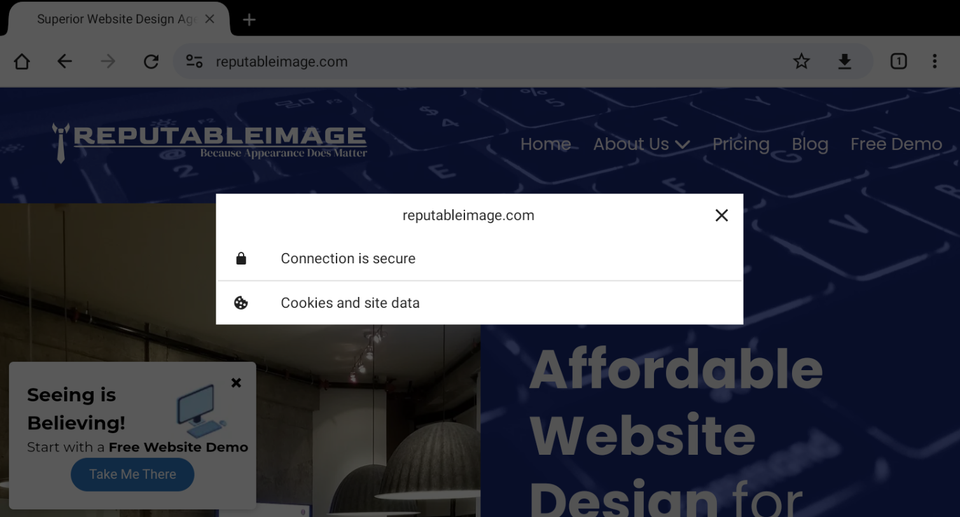
Amplify Your SEO Strategy:
Essential Tips Part 2
As promised last week, this week we're going to share more tips you can implement on your small business website today to position yourself among the first results on searches online.
If you haven't read our first entry on this series about SEO, we highly suggest you do so. But if you'd like a summary, SEO is a series of things you should add to your website to obtain more visits, which will come from online searches.
Last week we talked about how writing search friendly content, adding your business details and having a sitemap benefits SEO. This week we're gonna build on that and share 4 more tips to improve SEO.
1. Complete your website's SEO Settings (Meta Tags)
A website's SEO Settings are the Meta Tags that are inserted into the HTML code of a site and help search engines understand the content that’s on a particular page. Meta Tags include a Title, Description and Keywords, and are extremely important for SEO, as they help sites rank for related search terms.
There are two ways you can go about this: you may have the same Meta Tags applied to each and every page of your website, or you could create individual ones for each page. Depending on how many pages your website has, one out of those two approaches is the best for you; if your website doesn't have too many pages, a "Global" SEO approach would be best, if it does, then "Individual" page SEO would be ideal.
2. Submit Your Website to Search Engines
Ever wondered how long it will take for people to start finding your website online once you've published it?
Well, depending on how long Google takes to find and analyze your website (a process referred to as "crawling"), it could take from a few days to weeks. That is, if you don't submit your website yourself. If you're just beginning to build your online presence, then you won't want to skip this step.
So how do you submit your website to search engines?
You will first need to have your website's sitemap, which we talked about last week. Once you have it, head over to a tool called Google Search Console, then go to the section called Sitemaps, and you can add your website's sitemap from there. Similar steps are to be followed in order to add your website to Bing and Yahoo.
Not skipping this step will start bringing visitors to your website faster.
3. Be Active on Social Media
A business’s social media presence can have a big impact on their online visibility and search results. Establishing profiles and adding your website URL on popular social media sites like Facebook, Twitter, Google, and Yelp creates in-bound links and will help drive traffic to your site. When posting to social media be sure to encourage fans and followers to visit your website often. If you follow our guide on how to be active on social media, your website will benefit from the traffic brought by your online presence elsewhere.
4. Know the importance of an SSL certificate.
Have you ever noticed the little padlock icon that's in the address bar of your browser, right next to the website's actual address? Depending on whether you're on an android or iPhone, a tablet, or whether you're on a computer, it might be hidden behind Google Chrome's new "tune icon", so you might not see the padlock without tapping this icon first.
If you hadn't noticed the padlock before it might be news to you that it's always been there - silently doing its job, protecting you while you're online. That is, of course, when you're navigating safe websites, which are the most commonly known websites out there, thankfully.
This padlock icon indicates that a website has an SLL certificate. Or in other words, it is a secure website.


Feel free to verify this yourself: any major company's website will have that little padlock icon. Having it means that the personal information entered onto that website (such as your email address and name when you sign up for a newsletter, or make an online purchase, for example) is safely protected and away from the reach of hackers. The protection of all and any sensitive information people enter into a website is very important for SEO - payment information, log in credentials, you name it.
By now you've probably deduced why having an SLL certificate on your website is a MUST when building a brand online. With it, search engines like Google and Bing will trust a website and will send traffic to it. Without it, a website will not receive as many visitors, since online safety is a huuuuuge priority for search engines (and aren't we glad it is!).
So how do you get an SSL cert? This is provided by your web hosting company. Reputable Image websites all include SSL protection, which means you and your customers will be safe when interacting with your website - protected from any hacker out there. Other mainstream web hosting companies will likely offer SSL protection to their clients as well, though some of them charge somewhere around $149 dollars a year - or more.
In Conclusion
Now that you're even more armed with knowledge to use the powerful tool that is SEO, you might be noticing that some of these aspects of web development might not exactly be considered beginner-friendly by many. If this is you, worry not! As experts in this subject, your friendly neighborhood Reputable Image is here to answer any questions you might have about this complex and ever-changing subject. Nobody knows the importance of SEO better than we do!
Hit us up through our social media, via phone or by filling out this form - we offer a complimentary demo of your website, no strings attached!

